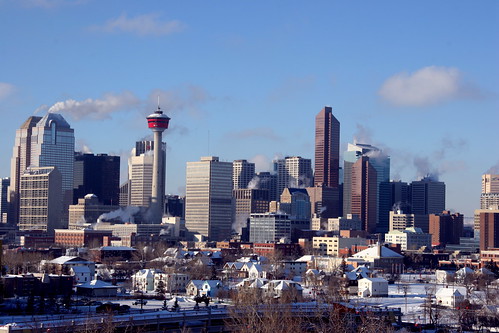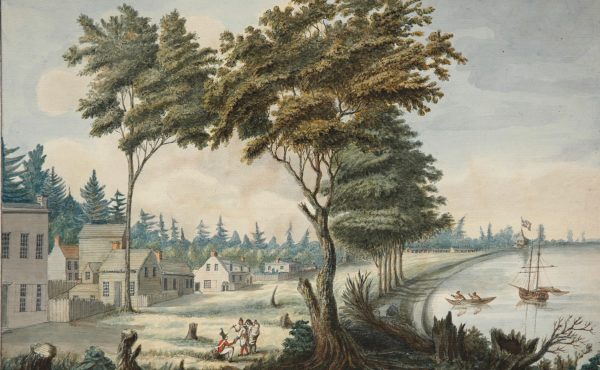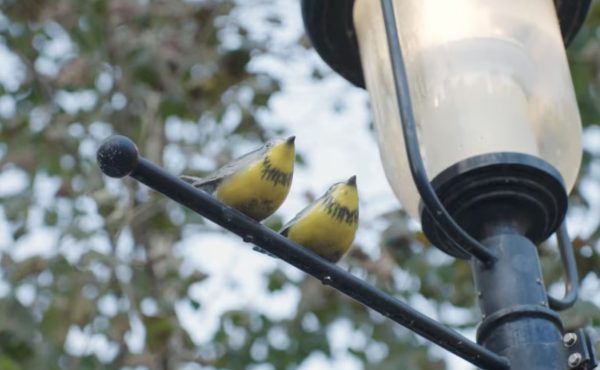
photo by James Bremner
I’m off to the Alberta Magazines Conference to speak about Spacing’s approach to building a community around a magazine and our somewhat unique distribution model. I’ve never been to Calgary, so I’m looking forward to wandering around the core of the city, while I hope to get to drive out into the sprawling ‘burbs I’ve heard so much about.
On these trips, I tend to walk furiously around the city photographing things like garbage/recycling bins, street furniture, cycling infrastructure, and other urban design elements (okay, I’m a bit weird). This usually results in a few posts here on Spacing Toronto and I suspect this trip will be no different. I’ve been told to see a few places by my friends, but I’d be happy to take suggestions from Spacing readers on parts of the city I should check out or details I should pay close attention to. Also free to leave me a message on my Facebook profile where I ask my “friends” for some travel advice.
I’ll also be working in Vancouver next week. I have spent a lot of time in that city over the last decade and I always leave impressed with some new urban design ideas they are experimenting with, such as turning a redundant block of a street into a parkette or allowing community groups to maintain gardens in public boulevards and roundabouts. But give me ideas for Vancouver as well.

photo by Wilhelm Sjostrom




5 comments
I’ve never been to Calgary either but I’m curious about the merits of the +15 system vs PATH. Pedestrian concourses not at street level are generally not a great idea for vibrant streetscapes but we have them, people use them, and I’m interested as to whether one system works better than the other.
Also, are downtown streets with C-Trains more or less lively than non-transit streets? Why? Any lessons in the suburban C-Train stops (like along 36th St) for Transit City’s suburban layouts?
Detail to pay attention to in Calgary:
Try jaywalking. Anywhere. Even in the suburbs. Stand at the edge of the road and no matter where you are, drivers will stop and let you cross.
Coming from Toronto, it’s an almost surreal experience.
That was exactly my experience Asher — north end of city, big arterial road. I just wandered near the edge and all 4 lanes stopped. I looked at drivers for a few seconds, in astonishment, then ran across.
Some more thoughts Calgarian:
-Seconding uSkyscraper’s comments about closely investigating CTrain infrastructure. So much of the discussion in Toronto about Transit City seems to be unduly influenced, both and pro- and con-, by the fact commenters tend to use the 510 as their conceptual starting point. But strange as it seems, the quintessentially successful at-grade modern LRT in North America is Calgary’s. One thing that might come as something of a surprise looking at 36th Street NE is how *substantial* the stations are. These aren’t St. Clair-style bus stops, these are bigass buildings that feel like train stations. I think one of the big questions that gets understudied in terms of the success of light rail is how “trainy” it feels and a huge part is whether it’s stopping a a proper platform or an overglorified bus stop.
-Oh, and further to that post, the best study of Calgary’s +15 network is the film Waydowntown.
-Check out Garrison Woods if you can… it’s probably one of the most-cited new urbanist redevelopments in Canada. Built on the site of a closed military base, it’s a ways out from downtown, so the biggest challenge, ironically enough, is probably getting out there without a car.
-Prince’s Island and the riverside trail network are worth a look. That’s a clear area where Calgary has Toronto beat. (Well, that along with the hockey team.)
-Downtown Calgary is a very, very different place at noon on a weekday and at 9 on a weekday. Seeing only one of the two means you’re missing out on a true sense of the place.
-Some of the older (speaking in Calgary terms, we’re probably talking 1910s-ish) inner suburbs are actually rather leafy and pleasant and unCalgarian… what little “old money” is in Calgary is installed in them, say, down along Elbow Drive and into Mount Royal.
-Be sure to snap from the air on approach to the airport if the conditions permit. If there’s one way to truly take in the sheer horror of Calgarian suburbia, it’s from the air.
-I’m racking my brain to see if I can think of any quintessentially Calgarian street furniture akin to the Toronto bike rack. All that’s coming to mind is the bizarre fact that Alberta likes to orient overhead traffic lights sideways.
The jaywalking thing is a common problem in many western cities in Canada and the US. You have to give up the habit of timing your crossing so that you walk behind a car that’s about to pass — put one foot in the roadway and traffic will stop, even if it is unsafe for them to do so. (No kidding, I almost triggered an accident this way once.)
A key difference between the CTrain and Transit City is high-floor vs. low-floor. The need for high platforms mean CTrain stops can’t be built as lightweight as the ones on Spadina. But it is an interesting question whether the TTC is making their stops too lightweight.